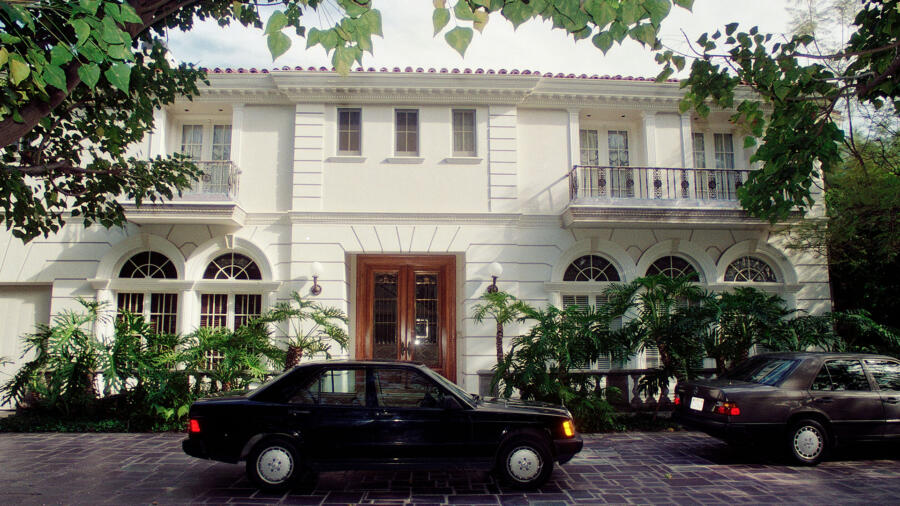Inside Murder Mansions: Uncovering the Dark Secrets of Infamous Crime Homes
It’s unsettling to realize that behind the walls of seemingly normal homes, some of the most horrific crimes in history unfolded. While the architecture may be ordinary, the stories rooted in these murder houses are anything but. From suburban mansions to remote farmhouses, these infamous properties became crime scenes that shocked the world.
Whether demolished or still standing today, these places serve as haunting reminders of evil hiding in plain sight.
The Menendez Brothers’ Mansion: Luxury Turned Lethal
Location: 722 North Elm Drive, Beverly Hills, California
Crime: Murder of parents José and Kitty Menendez, 1989
This lavish Beverly Hills mansion—spanning 9,000 square feet with luxury features like nine bathrooms, a guesthouse, and a pool—became a bloody crime scene on August 20, 1989. Erik and Lyle Menendez, then in their twenties, ambushed their parents while they watched TV. The brothers used shotguns at close range in what would become one of the most sensationalized crimes of the 20th century.
Afterward, they went on spending sprees, drawing suspicion. Their arrest followed, and their trial exposed claims of years of sexual and emotional abuse at the hands of their father. Both were sentenced to life without parole, though new evidence introduced in 2024 has led to reconsideration of their sentences.
Ed Gein’s Farmhouse: Real-Life Inspiration for Horror Movies
Location: Plainfield, Wisconsin
Crime: Murder and grave robbing, 1950s
Ed Gein’s farmhouse was no ordinary rural home. What police discovered inside was straight out of a horror film: furniture made of human bones, bowls fashioned from skulls, and masks crafted from faces. Though he admitted to murdering only two women, he confessed to robbing dozens of graves to create his grotesque collection.
The house was burned down in 1958, but the legend remains. His crimes inspired several horror icons, including Norman Bates in Psycho and Leatherface in The Texas Chainsaw Massacre.
John Wayne Gacy: A Suburban Nightmare
Location: Norwood Park, Illinois (Chicago area)
Crime: Murder of 33 boys and young men
John Wayne Gacy’s modest home concealed unimaginable horror. Beneath his floorboards, police discovered the remains of over two dozen boys and young men. Gacy, who worked as a contractor and entertained children as a clown, maintained a chilling double life.
His house was demolished in 1979, and the lot was given a new address to separate it from its terrifying legacy.
Joel Rifkin’s House of Horrors
Location: 1492 Garden Street, East Meadow, New York
Crime: Murder of at least nine women (1989–1993)
Joel Rifkin lived in a typical suburban home with his mother and sister. But inside, his bedroom and garage told a different story—dirty, hoarded, and filled with items stolen from victims. When police stopped him for a missing license plate, they discovered a decomposing body in his vehicle, leading to his arrest.
Shockingly, his family had no idea he was one of New York’s most prolific serial killers.
James Ruppert’s Easter Sunday Massacre
Location: 635 Minor Avenue, Hamilton, Ohio
Crime: Murder of 11 family members on March 30, 1975
In a small, two-bedroom home, James Ruppert murdered his entire family on Easter Sunday. Motivated by jealousy and resentment, he killed his mother, brother, sister-in-law, and eight nieces and nephews using multiple firearms. It remains one of the deadliest family massacres in U.S. history.
The home still stands, and stories circulate about its haunted legacy.
Other Infamous Murder Houses That Still Haunt Us
- The Amityville Horror House – A chilling tale of mass murder followed by alleged hauntings made this home a cultural phenomenon.
- Dorothea Puente’s Boarding House – In Sacramento, California, Puente buried elderly tenants in her backyard for their Social Security checks.
- The Villisca Axe Murder House – In Iowa, eight people were murdered in their sleep in 1912, and the mystery remains unsolved.
- The LaLaurie Mansion – In New Orleans, Madame Delphine LaLaurie tortured enslaved people in secret chambers.
Can These Murder Houses Ever Be Homes Again?
Despite their histories, some of these homes are sold to new owners who either don’t know—or don’t care—about their grim pasts. Others are torn down, as if to symbolically erase the horror. Yet, the stories remain alive through documentaries, books, and endless public fascination.
For real estate markets, properties like these are hard to sell. In some states, sellers are legally required to disclose if a murder occurred in the home. In others, buyers remain in the dark—literally and figuratively.
Why We’re Drawn to Murder Houses
There’s something morbidly fascinating about homes once inhabited by killers. Maybe it’s curiosity. Maybe it’s the thrill of fear from a safe distance. Or perhaps it’s our search to understand what drives a seemingly normal person to commit such evil.
Whatever the reason, murder houses continue to capture public imagination—and serve as chilling footnotes to our darkest histories.
FAQs
Are murder houses legal to sell?
Yes. Laws vary by state, but most allow the sale of homes where murders have occurred, often without mandatory disclosure.
Do murder houses lose value?
Yes. These properties often suffer from reduced market value due to stigma and difficulty finding buyers.
Can you tour any murder houses?
A few murder houses, like the Villisca Axe Murder House, offer paid tours or overnight stays. Most are private residences or demolished.
Why are people fascinated with murder houses?
Many people are intrigued by the psychological and historical aspects, similar to the appeal of true crime media.
Do homes retain energy from violent crimes?
While no scientific evidence proves this, many people report feelings of unease or paranormal activity in such locations.
Have any murder house owners profited from the home’s history?
Yes. Some homes, like the Amityville Horror House, became tourist attractions or were featured in books and films.

